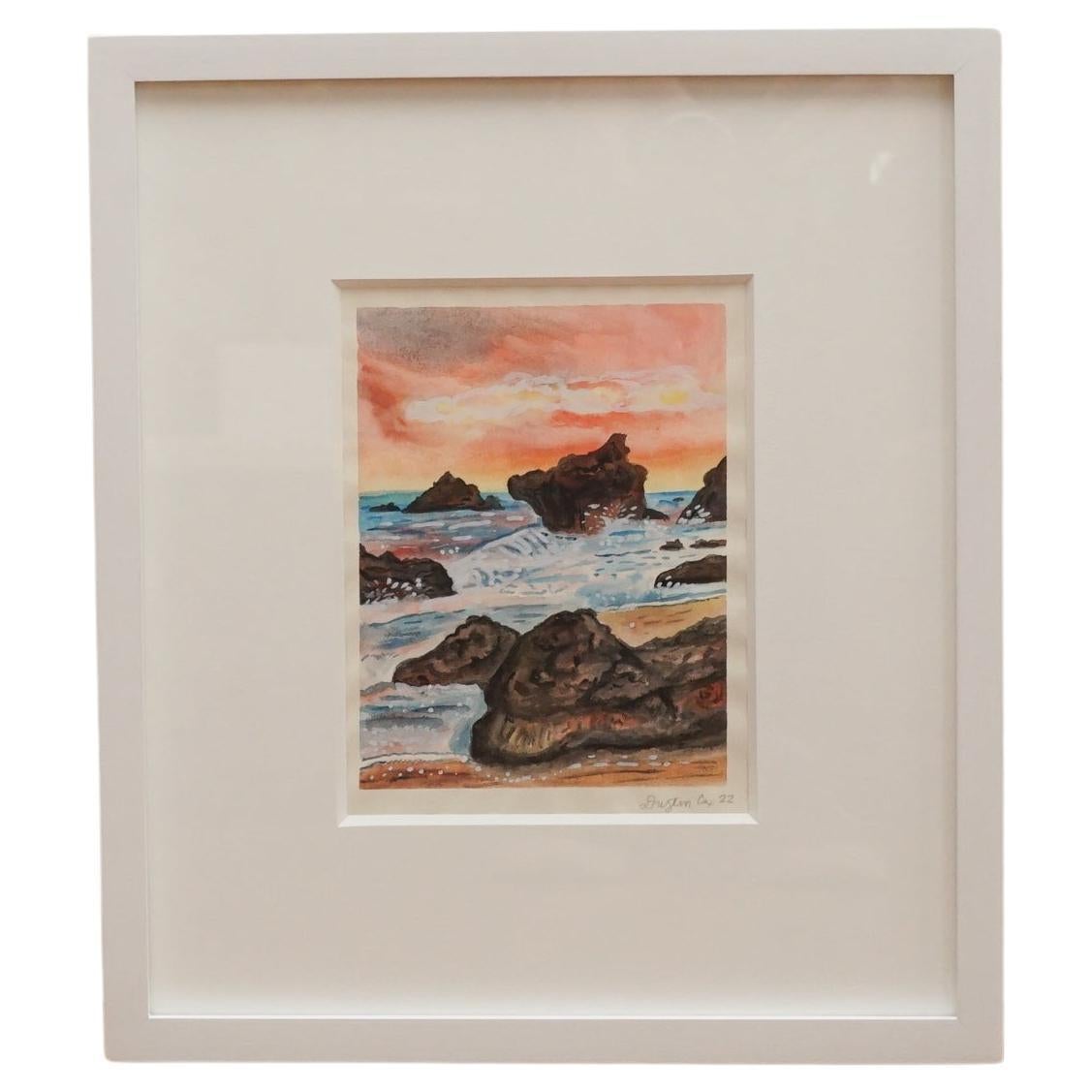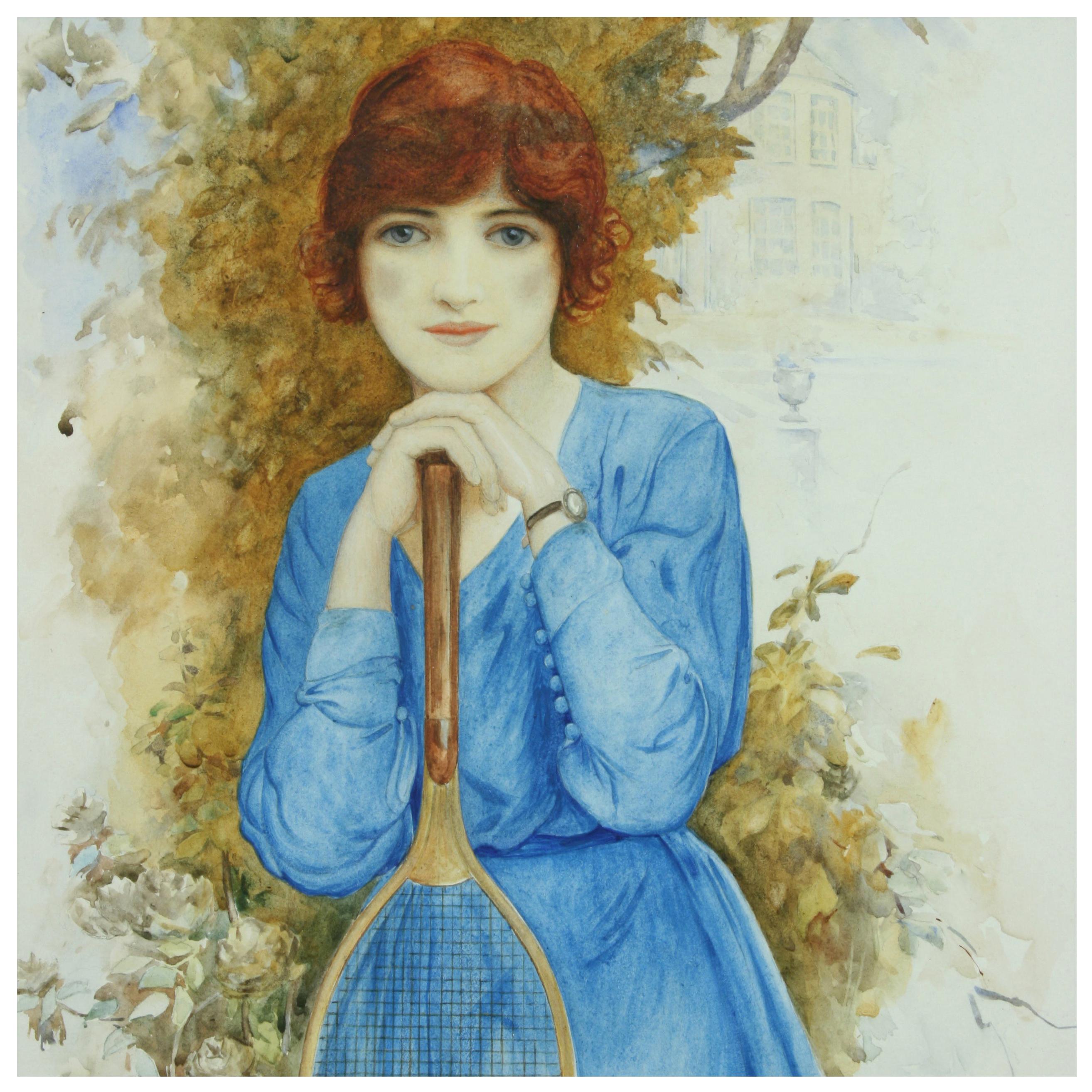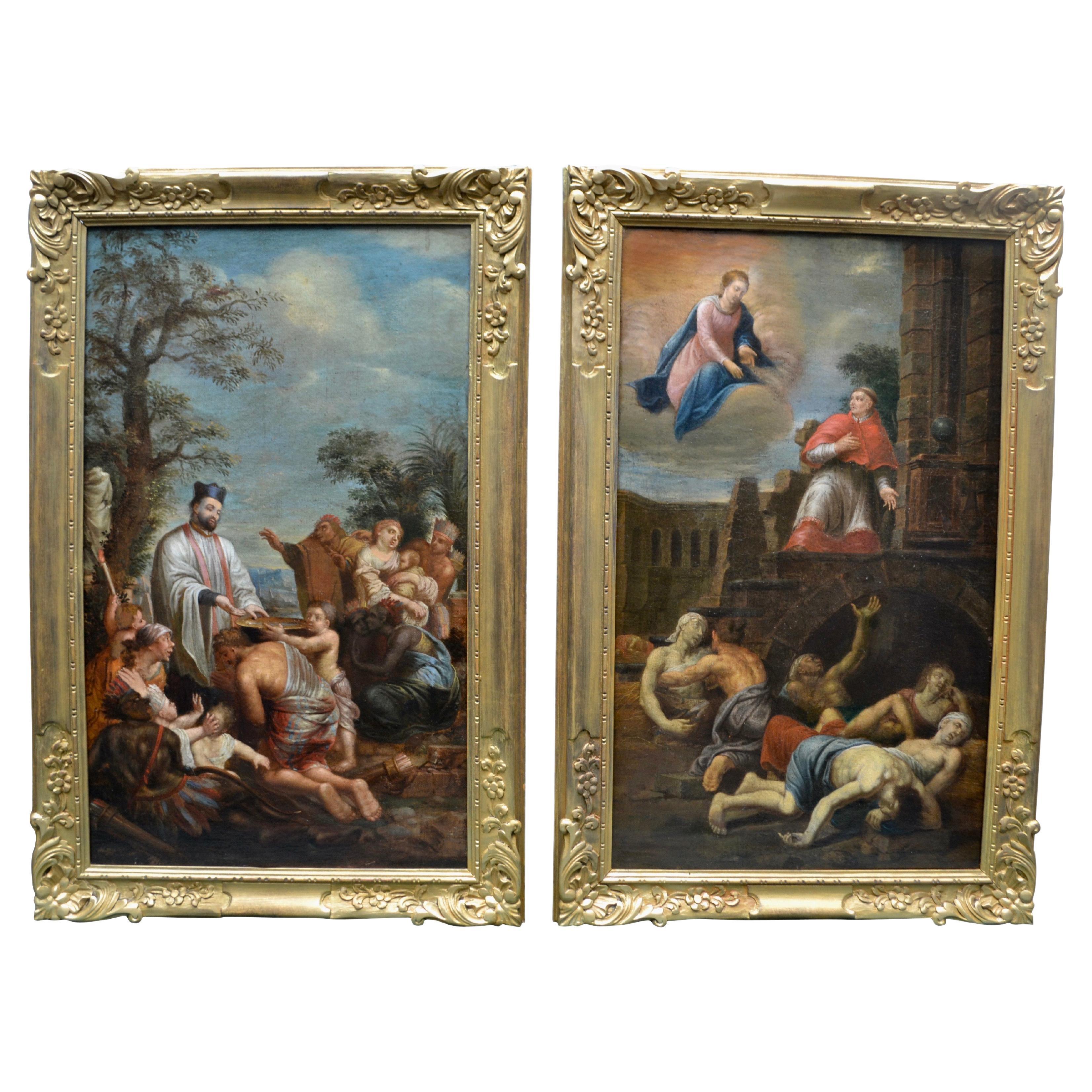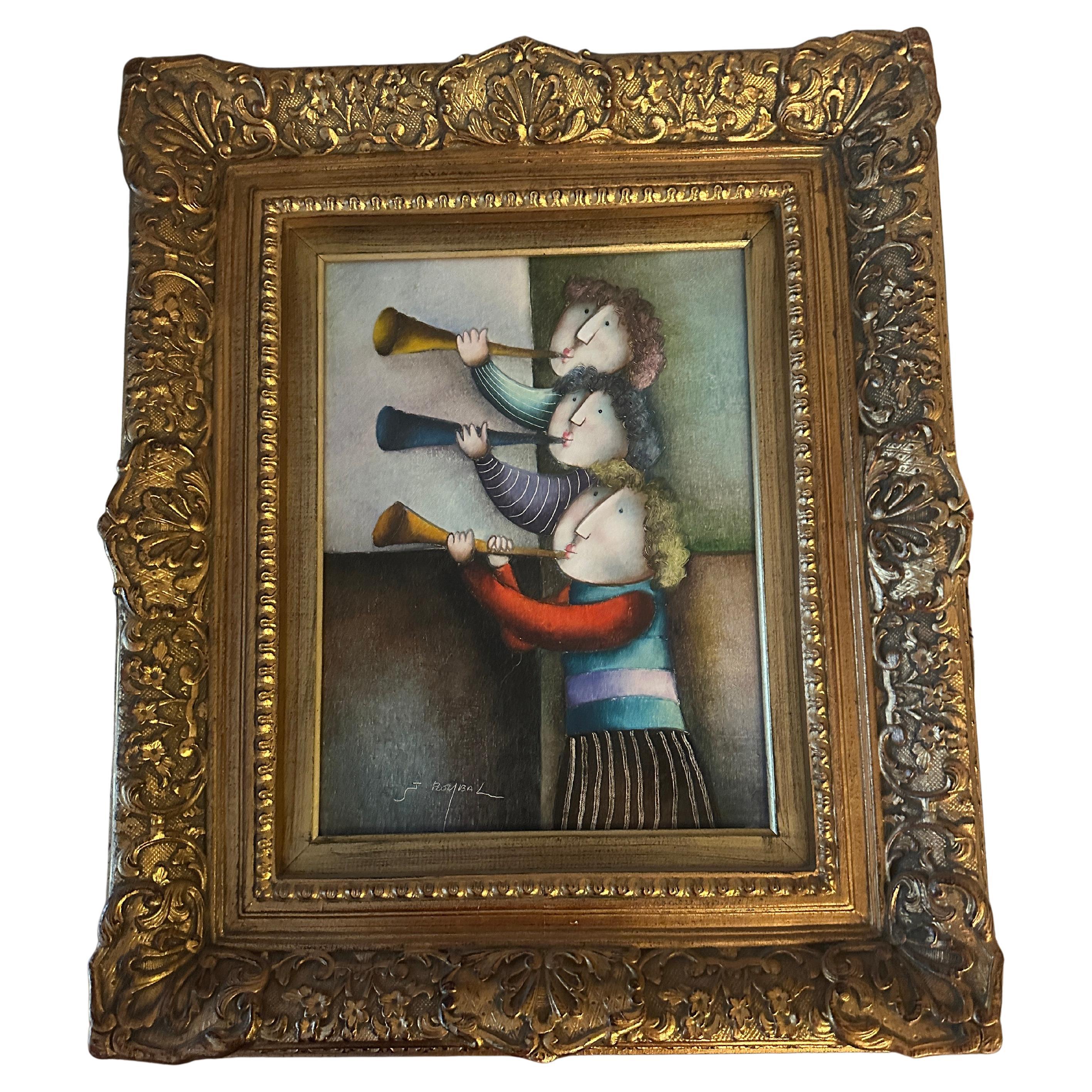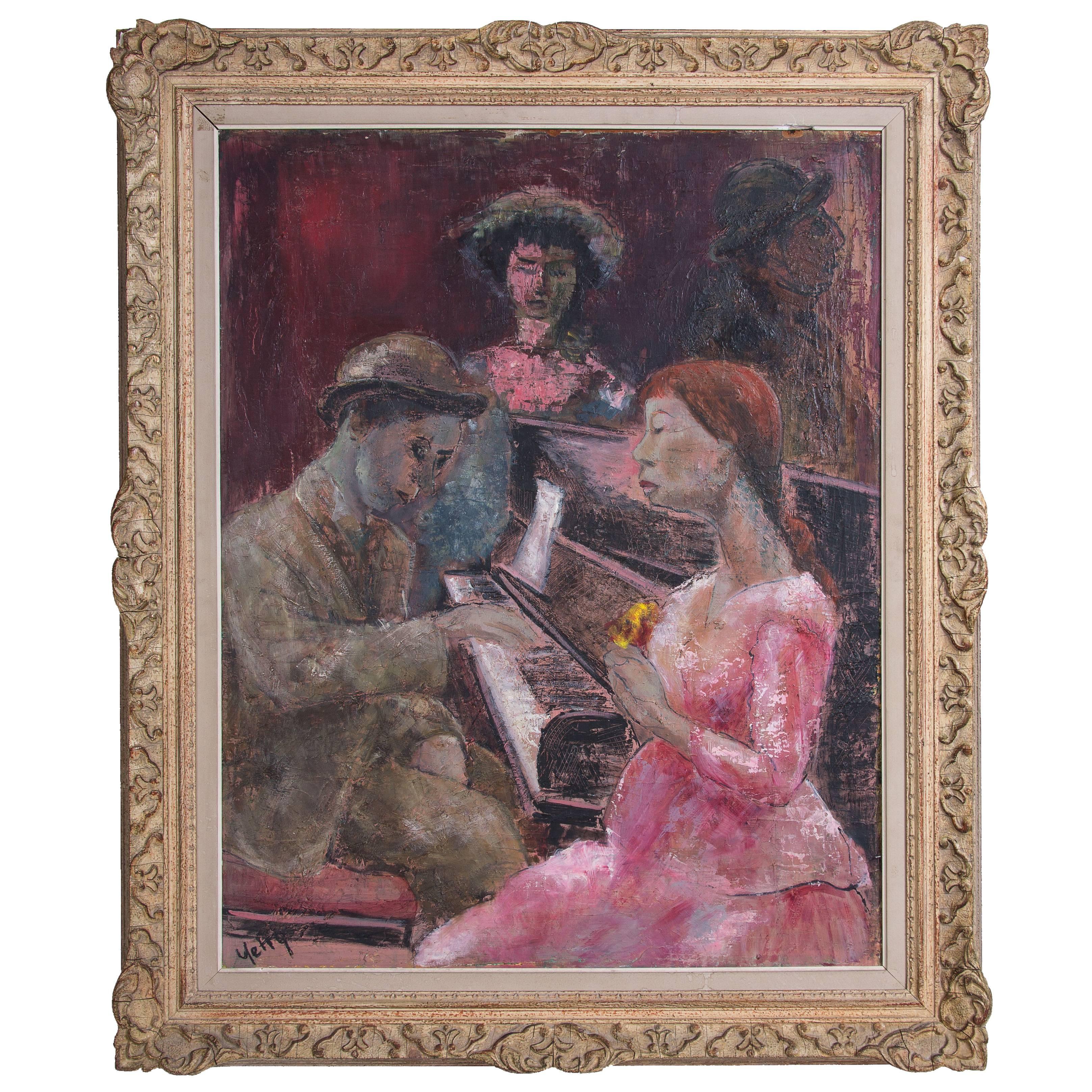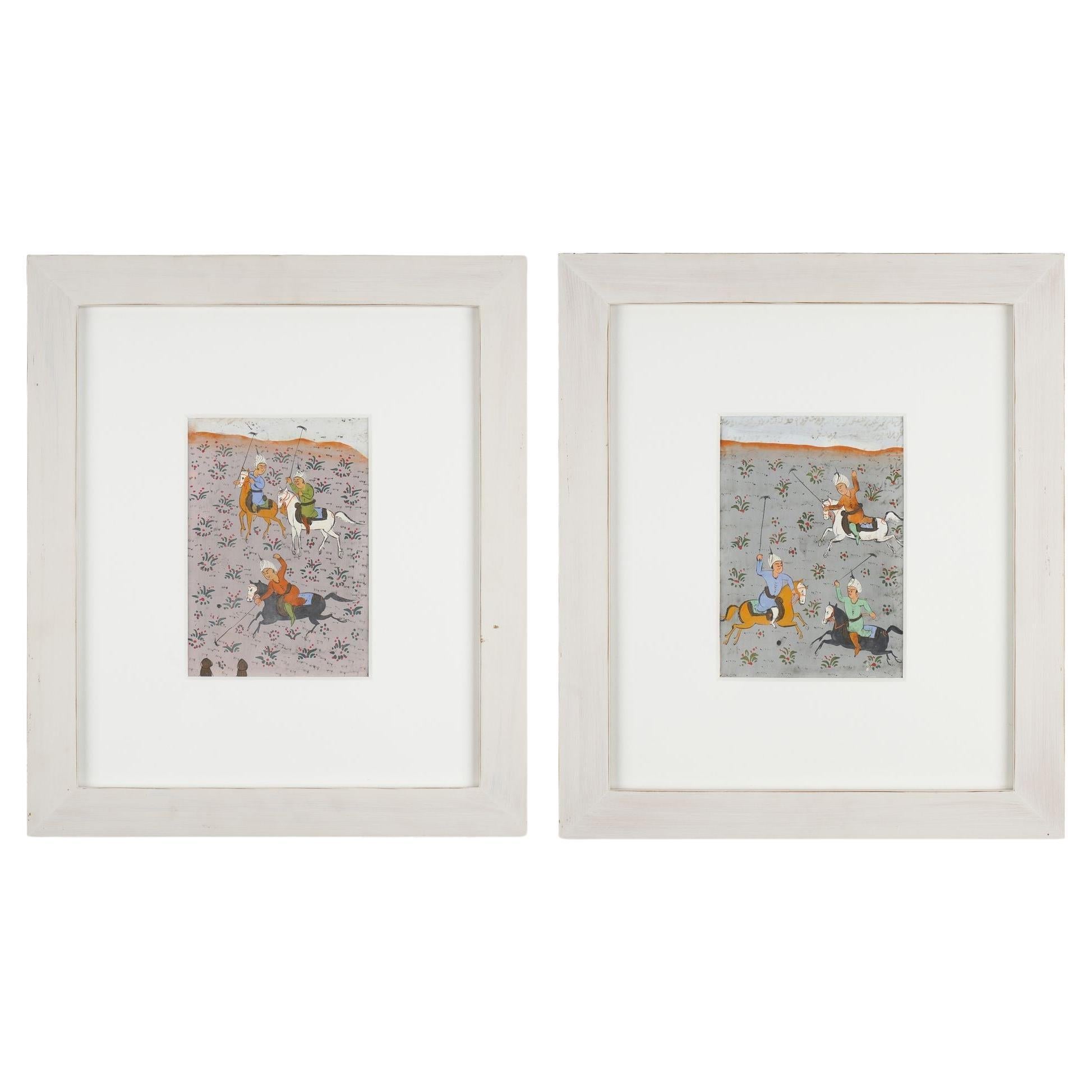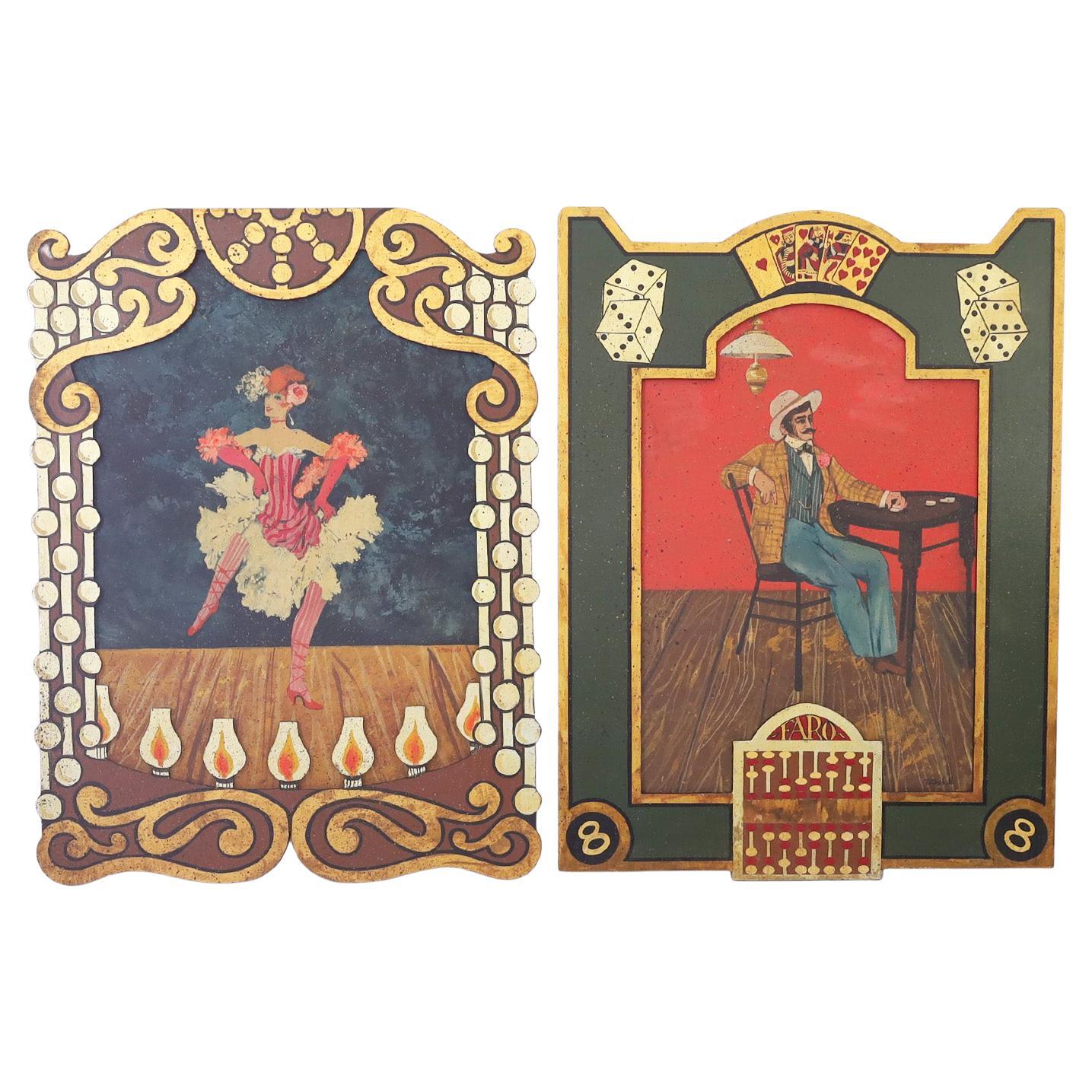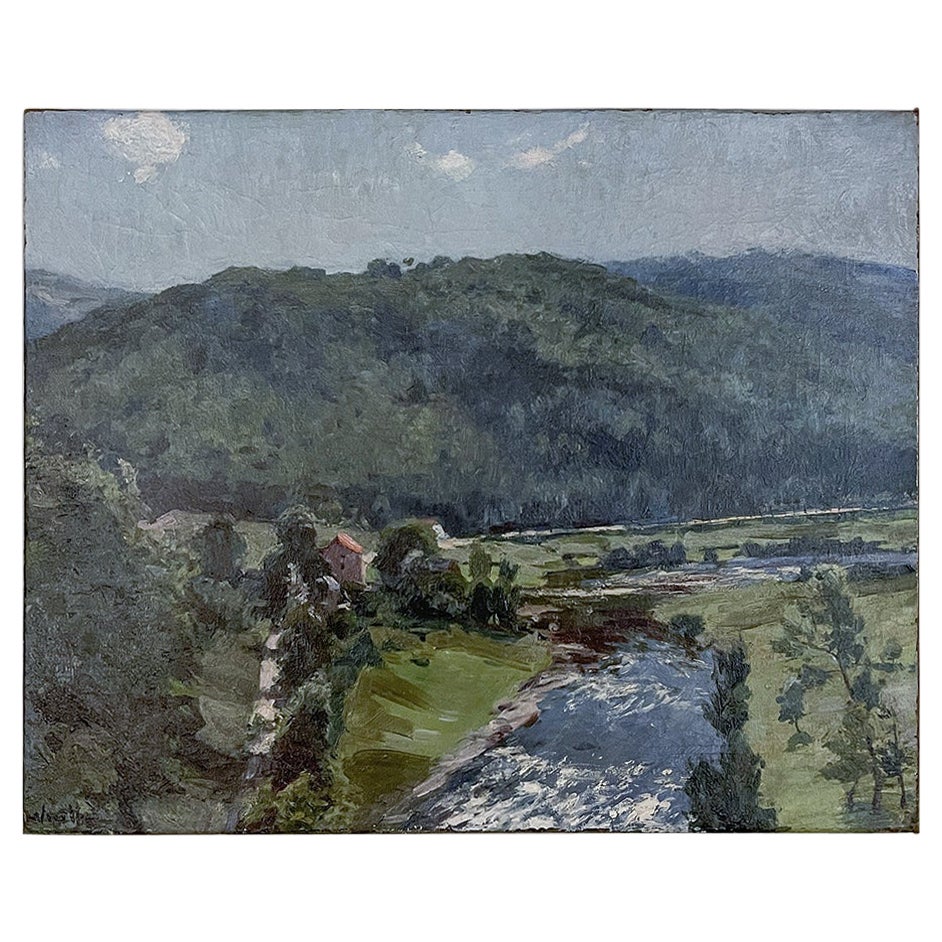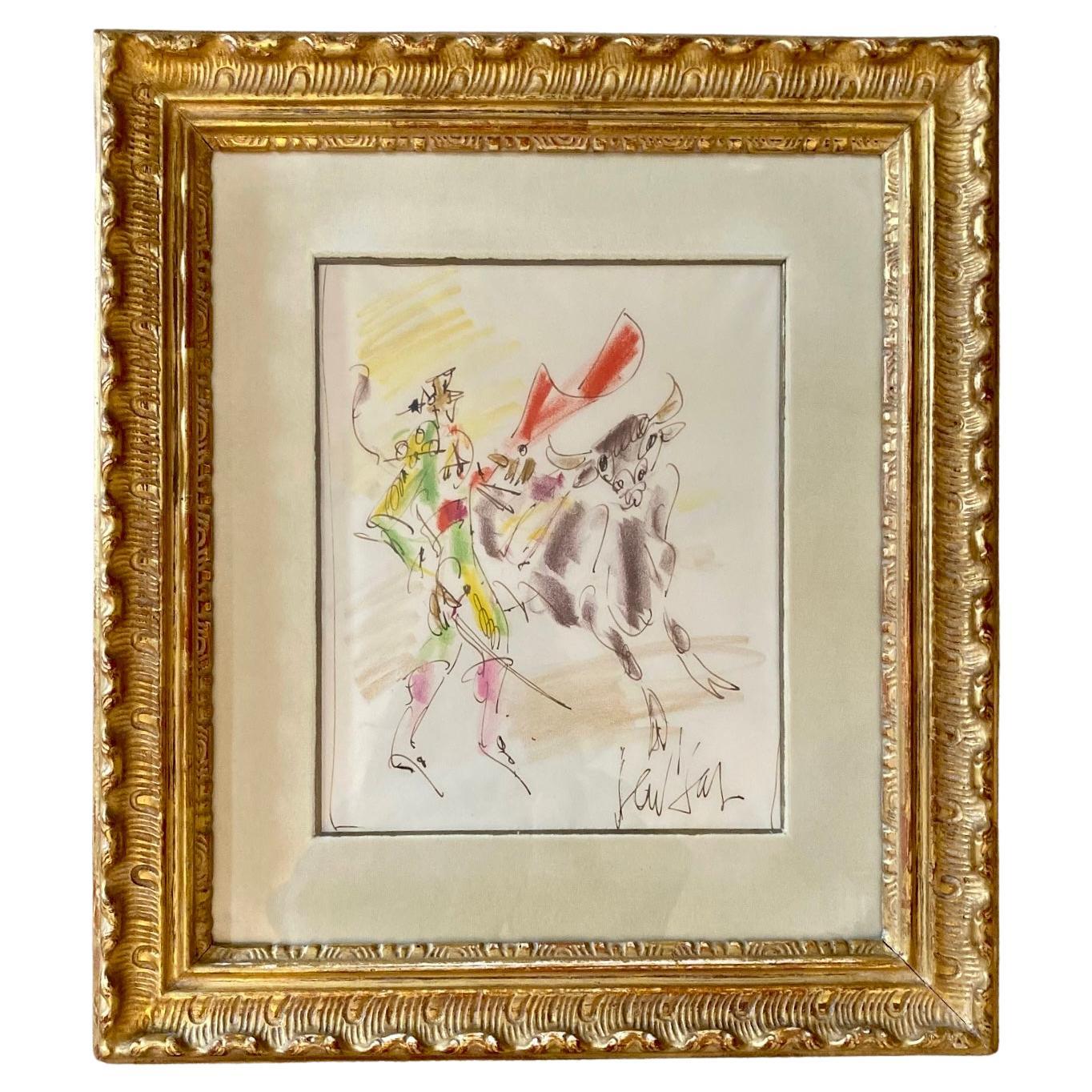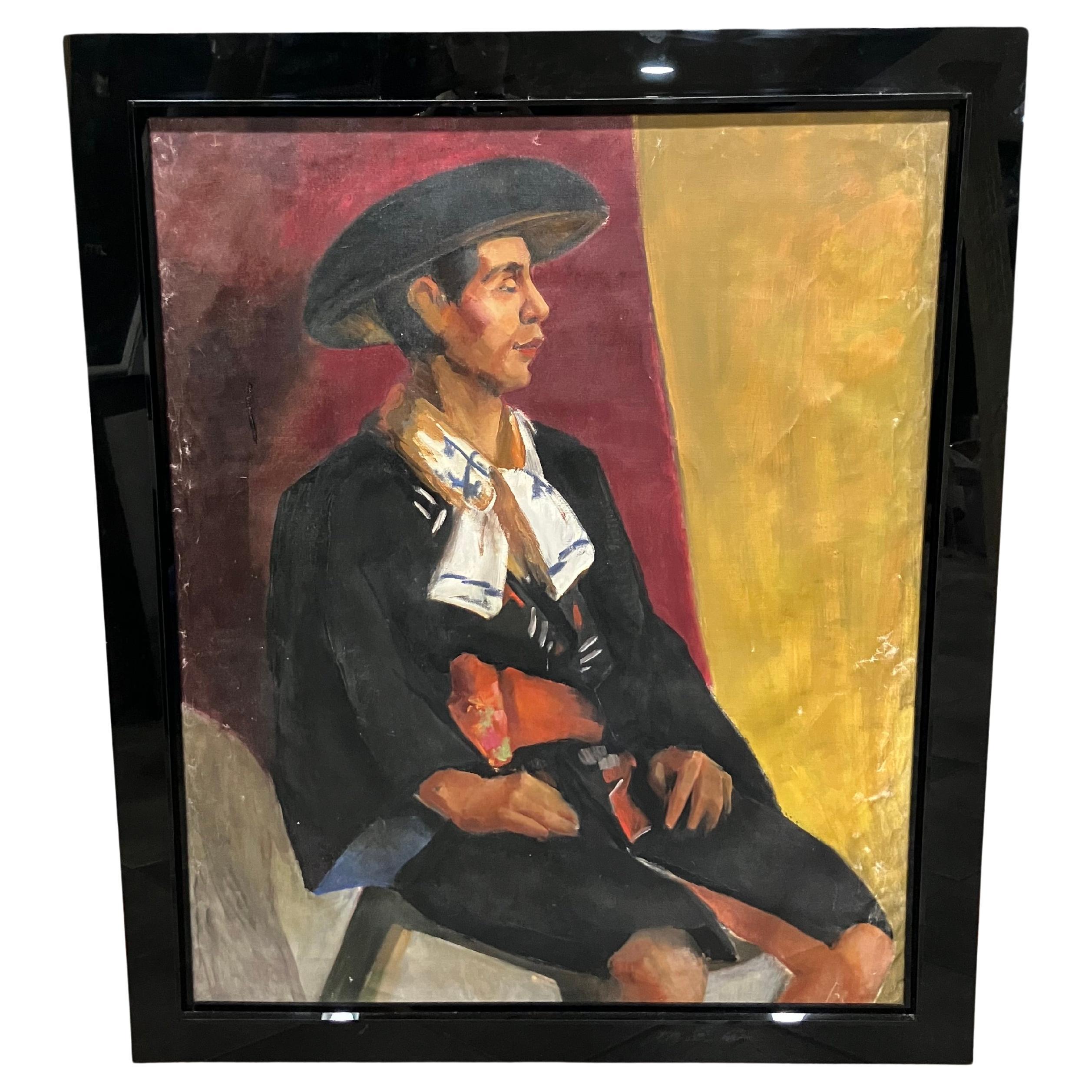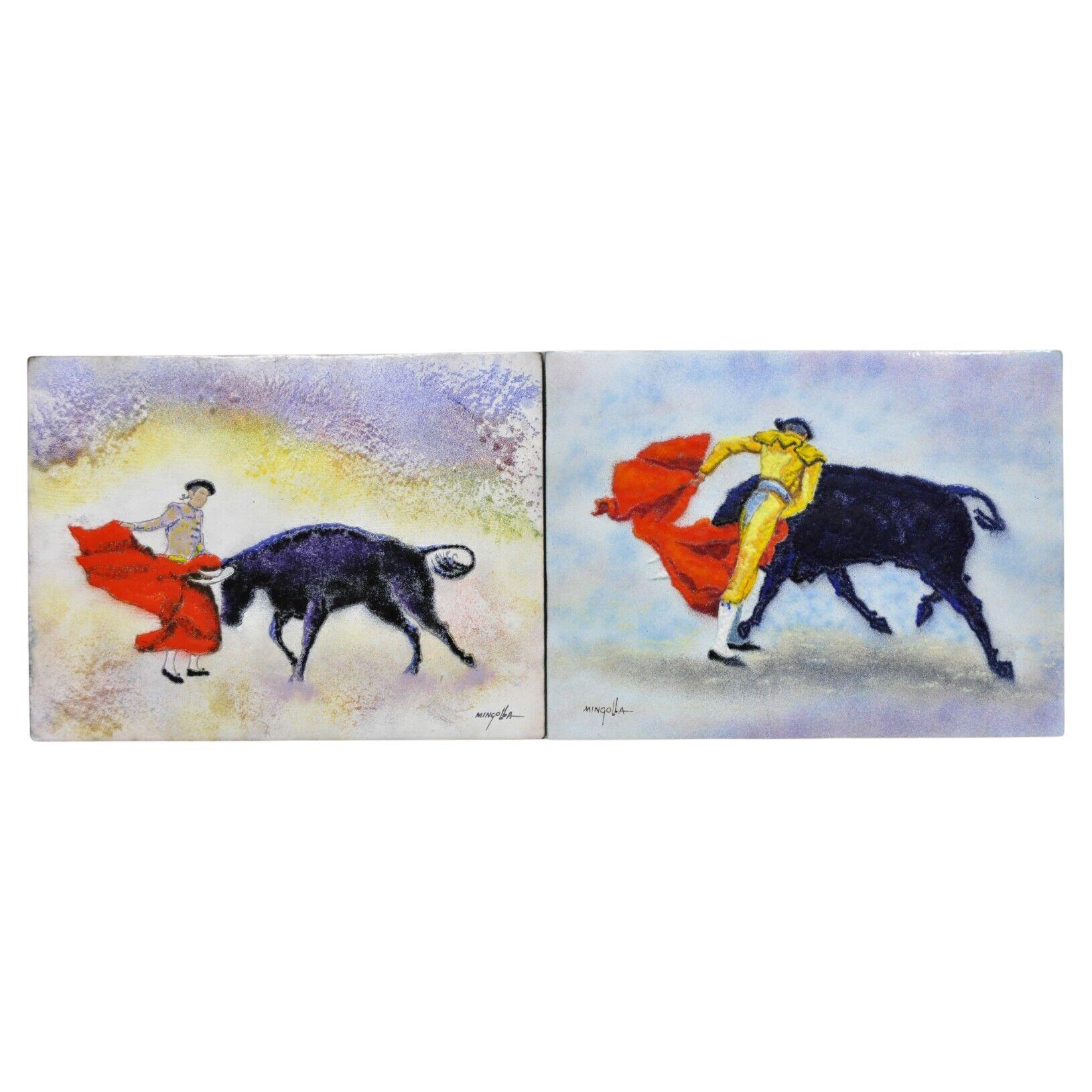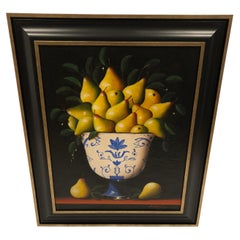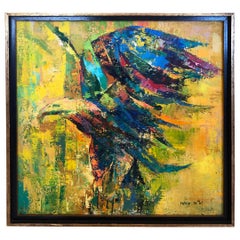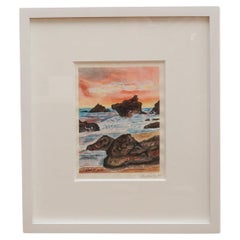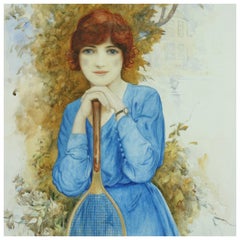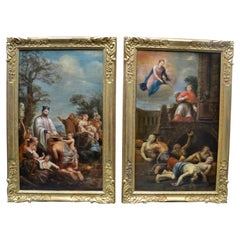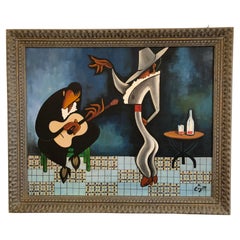
Xavier Cugat Original Painting of Matador and Guitar Player
View Similar Items
Want more images or videos?
Request additional images or videos from the seller
1 of 9
Xavier Cugat Original Painting of Matador and Guitar Player
Price:$1,600
$1,800List Price
About the Item
- Dimensions:Height: 28.25 in (71.76 cm)Width: 34.25 in (87 cm)Depth: 2 in (5.08 cm)
- Style:Mid-Century Modern (In the Style Of)
- Materials and Techniques:
- Place of Origin:
- Period:1980-1989
- Date of Manufacture:1980
- Condition:Wear consistent with age and use.
- Seller Location:Hopewell, NJ
- Reference Number:1stDibs: LU919834705312
About the Seller
4.8
Gold Seller
Premium sellers maintaining a 4.3+ rating and 24-hour response times
Established in 2008
1stDibs seller since 2011
2,321 sales on 1stDibs
Typical response time: 1 hour
Authenticity Guarantee
In the unlikely event there’s an issue with an item’s authenticity, contact us within 1 year for a full refund. DetailsMoney-Back Guarantee
If your item is not as described, is damaged in transit, or does not arrive, contact us within 7 days for a full refund. Details24-Hour Cancellation
You have a 24-hour grace period in which to reconsider your purchase, with no questions asked.Vetted Professional Sellers
Our world-class sellers must adhere to strict standards for service and quality, maintaining the integrity of our listings.Price-Match Guarantee
If you find that a seller listed the same item for a lower price elsewhere, we’ll match it.Trusted Global Delivery
Our best-in-class carrier network provides specialized shipping options worldwide, including custom delivery.More From This Seller
View AllDog Lovers Original Painting of Trio of Pets
Located in Hopewell, NJ
Wonderful portrait of 3 loyal pooches in old world style framed in a carved giltwood molding. Their glistening eyes and soft shiny fur with melt your heart!
Unsigned. Canvas is 35.5...
Category
Vintage 1970s North American Paintings
Materials
Canvas
$813 Sale Price
34% Off
Striking Original Still Life Painting of Pears
Located in Hopewell, NJ
Gorgeously rendered still life of a large blue and white bowl overflowing with ripe yellow green pears set against a graphic black background...
Category
1990s American Paintings
Materials
Canvas
Striking Original Contemporary Oil Painting of Eagle
Located in Hopewell, NJ
Beautifully rendered colorful painting of an eagle with strong palette knife strokes and texture.
Category
Vintage 1960s North American Paintings
Materials
Canvas
Riff on Fuschia and Turquoise Original Abstract Painting
By Fay Sciarra
Located in Hopewell, NJ
A striking abstract painting emphasizing a sensual unpredictable composition of squiggly forms having a delicious palette of fuschia, turquoise, acid green, blues and purples. By well known Princeton contemporary artist Fay Sciarra.
Category
21st Century and Contemporary American Modern Paintings
Materials
Canvas
Original Square Abstract Painting in Pink and Brown
By Fay Sciarra
Located in Hopewell, NJ
Bold yet soothing abstract geometric composition on canvas with circles, rectangles, squares and lines in a wonderful color palette of brown and pin...
Category
21st Century and Contemporary American Modern Paintings
Materials
Canvas, Acrylic
$725 Sale Price
50% Off
Adorable Original Antique Painting of Puppy in a Basket
Located in Hopewell, NJ
Irresistible beautifully rendered original painting from the 1800s of a black and white puppy in a basket. The spare color palette and dark b...
Category
Antique Early 1800s American Paintings
Materials
Paint
$1,760 Sale Price
20% Off
You May Also Like
Vintage Original Oil Painting of Bass Player Signed Patty Pease
Located in West Palm Beach, FL
Fantastic vintage original oil painting. Signed by the artist Patty Pease. A fabulous composition of a MCM bass player.
Category
Mid-20th Century Bohemian Paintings
Materials
Paint
Dustin Cox, "El Matador" Watercolor painting
Located in Hudson, NY
Toronto-based graphic designer and artist, Dustin Cox, reveals his skill as watercolorist in this rocky beach watercolor, titled "El Matador." Newly framed and signed and dated by t...
Category
21st Century and Contemporary Canadian Organic Modern Paintings
Materials
Wood
Antique Painting of a Young Tennis Player, Watercolor
By Oscar Wilson
Located in Oxfordshire, GB
The tennis girl, painting in watercolor.
A fine, well-executed watercolor painting by Oscar Wilson (1867-1930),"The young tennis player". The image is of...
Category
Early 20th Century English Sporting Art Paintings
Materials
Paper
$1,164 Sale Price
22% Off
Pair of 18 Century Paintings of St Francis Xavier and St Carlo Borromeo
Located in Vancouver, British Columbia
A beautifully executed and rare complementary pair of oil on canvas paintings depicting two of the moist famous and important counter reformation catholic saints St Francis Xavier and St Carlo Borromeo shown in scenes of what the respective saints are mostly famous for. St Francis Xavier for the conversion to Christianity of many S. E Asian countries notably India and St Carlo Borromeo shown asking the Virgin Mary to intercede for the cessation of the terrible plague of 1576. The paintings are presented in refreshed gilded carved wooden frames and are unsigned.
St. Francis Xavier was born in Spanish Navarre in 1506 and in 1528, he met St. Ignatius of Loyola. He became one of the seven in 1534 who founded the Society of Jesus (Jesuit Order). In 1536, he left the University of Paris and joined St. Ignatius in Venice. He was ordained in 1537, and in 1540 after the Society was recognized by the Pope, he journeyed to the Far East. Francis Xavier first evangelized the Portuguese colony of Goa in India, then Travancore, Ceylon, Malacca, and the surrounding islands. From there he journeyed to Japan, where he gave Christianity such deep roots that it survived centuries of violent persecution. He died on Sancian Island in 1552, while he was seeking to penetrate into the great forbidden land of China.
Despite language problems, lack of funds, resistance from the Europeans as well as the natives, he persevered. St. Francis converted more people in his life than anyone since the Apostle St. Paul. He baptized over 3 million people, converted the entire town of Goa in India, and he labored in India, Pakistan, Bangladesh, Sri Lanka, Malaysia, Indonesia, Singapore, and Japan. He was truly a missionary par excellence.
St Carlo Borromeo (1538-1584), was a Cardinal of the Holy Roman Catholic Church and Archbishop of Milan from 1565 to 1583. He was described in the decree for his canonization, as “a man, even while the world smiles on him with the utmost flattery, he lives crucified to the world, spiritually, trampling earthly things, seeking continuously the things of heaven, emulating the life of the Angels on earth, in his thoughts and actions.
The plague began in the month of August that year. Milan was celebrating joyfully the arrival of Don John of Austria, on his way to Flanders, where he had been appointed governor. The city authorities were abuzz with excitement in their desire to bestow the highest honours on the Spanish prince, but Charles, who had been Archbishop of the diocese for six years, was following with concern the news coming from Trento, Verona and Mantua, where the plague had begun claiming victims. The first cases exploded in Milan on August 11th, right at the moment when Don John of Austria arrived. The victor of Lepanto, followed by the governor, Antonio de Guzmán y Zuñiga, departed the city, while Carlo Borromeo, who was in Lodi for the Bishop’s funeral, returned in haste.
Confusion and fear reigned in Milan and the Archbishop dedicated himself completely to assisting the sick and ordering public and private prayers. Dom Prosper Guéranger sums up his infinite charity in this way: “In the absence of local authorities, he organized the health service, founded or renewed hospitals, sought money and provisions, decreed preventive measures. Most importantly though, he took steps to ensure spiritual help, assistance to the sick and the burial of the dead. Unafraid of being infected, he paid in person, by visiting hospitals, leading penitential processions, being everything to everyone, like a father and true shepherd”
St. Carlo was convinced that the epidemic was “a scourge sent by Heaven” as chastisement for the sins of the people and that recourse to spiritual measures was necessary to fight against it: prayer and penitence. He rebuked the civil authorities for having placed their trust in human measures rather than divine ones. “Hadn’t they prohibited all the pious gatherings and processions during the time of the Jubilee? For him, and he was convinced of it, these were the causes of the chastisement. The magistrates who governed the city continued to oppose public ceremonies, out of fear that the large gathering of people would spread contagion, but Charles “who was guided by the Divine Spirit” – recounts another biographer – convinced them by citing various examples, among which was the one regarding St. Gregory the Great who had halted the plague devastating Rome in 590.
While the pestilence spread, the Archbishop then ordered three general processions to take place in Milan on the 3rd, 5th and 6th of October, “to placate the wrath of God”. On the first day, the Saint, despite it not being the Lenten season, placed ashes on the heads of the thousands gathered, exhorting them to penitence. Once the ceremony was over, the procession went to the Basilica of St. Ambrose. Charles put himself at the head of the people, dressed in a hooded purple robe, barefoot, penitential cord at his neck and large cross in his hand.
The second procession led by the Cardinal headed towards the Basilica of San Lorenzo. The third day the procession from the Duomo headed for the Basilica of Santa Maria at San Celso. St. Carlo carried in his hands a relique of Our Lord’s Holy Nail, which had been given by the Emperor Theodosius to St. Ambrose in the 5th century.
The plague didn’t show any signs of waning and Milan appeared depopulated, as a third of its citizens had lost their lives and the others were in quarantine or didn’t dare leave their homes. The Archbishop ordered about twenty stone columns with a cross at the top to be erected in the main squares and city crossroads, allowing the inhabitants from every quarter to take part in the Masses and public prayers - from the windows of their homes. One of Milan’s protectors was St. Sebastian, the martyr the Romans had recourse to during the plague in 672. St. Charles suggested that the magistrates of Milan reconstruct the sanctuary dedicated to him, which was falling into ruins, and to celebrate a solemn feast in his honour for ten years. Finally in July 1577, the plague ceased and in September the founding stone was laid in the civic temple of St. Sebastian, where on January 20th every year, even today a Mass is offered to recall the end of the scourge.
St.Carlo Borromeo died on November 3rd 1584 and was buried in the Duomo of Milan. His heart was solemnly translated to Rome, in the Basilica of Saints Ambrose...
Category
Antique Late 18th Century French Baroque Paintings
Materials
Canvas
Joyce Roybal – "Trumpet Players" – Original Oil Painting with Ornate Frame
By Graciela Rodo Boulanger
Located in New York City, NY
This whimsical and vibrant painting by Joyce Roybal captures her signature style of joyful, childlike wonder. Featuring three stylized figures playing trumpets, the composition is ri...
Category
Mid-20th Century Paintings
Materials
Acrylic, Plywood, Paint
Original Oil Painting on Board by Yetty Titled "Piano Player"
By Yetty
Located in WEST PALM BEACH, FL
Oil on board by listed Belgium born impressionistic painter Yetty. Signed in lower left corner.
Category
Mid-20th Century Unknown Other Paintings
Materials
Canvas

